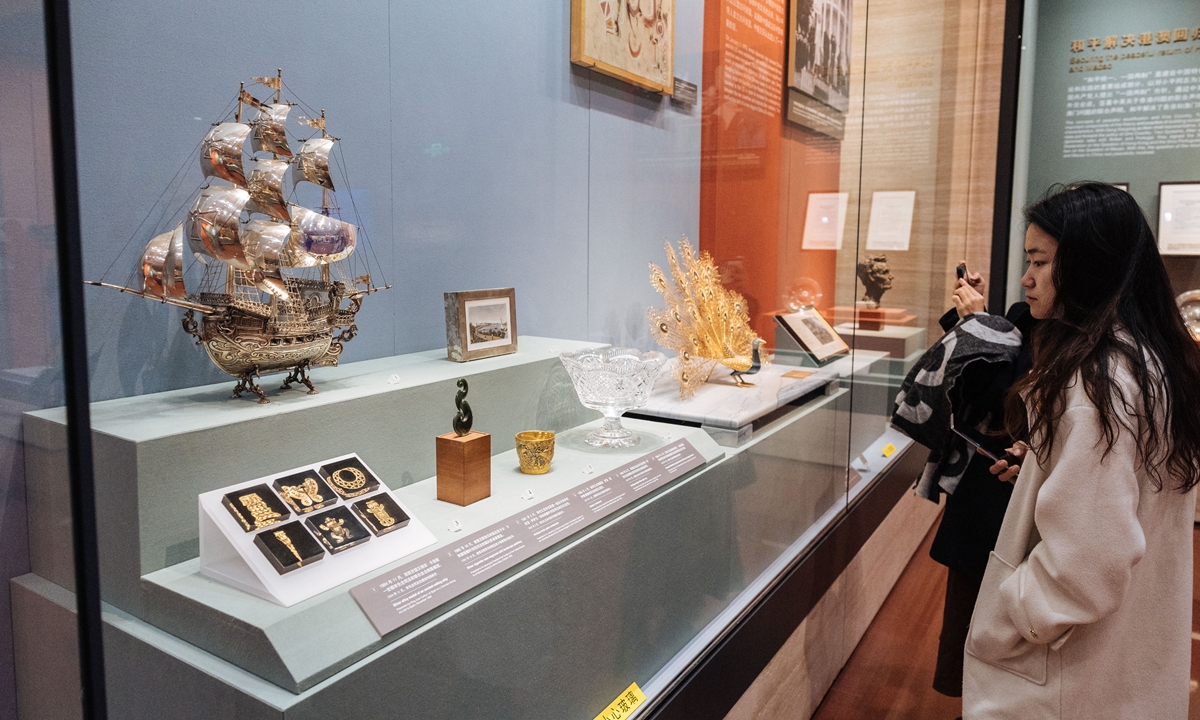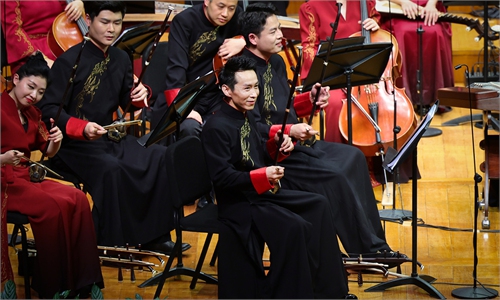ARTS / CULTURE & LEISURE
Germany's discussion of restitution for looted Chinese artifacts deserves credit

A visitor checks exhibits in the Central Gifts and Cultural Relics Management Center in Beijing on November 22, 2023. Photo: Li Hao/GT
A recent initiative by several German museums to trace the origins of Chinese cultural relics is a commendable step toward rectifying historical injustices.
For too long, the focus of restitution debates has predominantly centered on African artifacts in Germany, highlighted by the return of 22 Benin Bronzes to Nigeria in 2022. It leaves the plight of looted Chinese treasures in Germany overlooked, however. The tide seems to be shifting, with German museums now actively engaging in the pursuit of truth and reconciliation regarding these stolen relics.
The recent dialogue between Chinese and German experts on identifying and repatriating looted artifacts signals a promising direction for international collaboration.
The accounts of looting during the Eight-Nation Alliance's invasion of China at the beginning of the 20th century paint a grim picture of cultural exploitation and plunder. To redress this past, a project named the "Traces of the 'Boxer War' in German Museum Collections" was launched by seven German museums in 2021.
German soldiers and officers, swept up in the frenzy of war, pillaged Chinese artifacts, which subsequently found their way into European collections. These acts of cultural theft perpetuated a cycle of erasure and disconnection from heritage for the Chinese people.
The meticulous efforts of German researchers like Christine Howald of the Berlin State Museums and Susanne Knödel of the Museum of Ethnology, Hamburg have shed light on the murky provenance of these artifacts, challenging the complacency of museums and collectors. By compiling lists of suspicious items and collaborating across institutions, they have initiated a systematic inquiry into the origins of looted relics, marking a significant milestone in the restitution movement.
However, the mere tracing of origins isn't sufficient; the ultimate act of respect for history lies in the return of these artifacts to their rightful home. The significance of repatriation goes beyond symbolic gestures; it's a tangible acknowledgment of past wrongs and a step toward healing historical wounds.
The reluctance of some museums in the past to acknowledge the dubious origins of their Chinese collections is understandable, but no longer justifiable.
As awareness grows and public sentiment shifts, museums are compelled to confront their complicity in cultural exploitation and take meaningful action. Establishing networks of researchers dedicated to the study of Asian art origins demonstrates a commitment to rectifying historical injustices and fostering cross-cultural understanding.
Returning looted relics to their countries of origin isn't without challenges, but these obstacles pale in comparison to the moral imperative of restitution. As discussions progress and initiatives gain momentum, it's imperative for both China and Germany to prioritize the return of these artifacts, ensuring that stolen heritage is rightfully reclaimed and preserved for future generations.
The author is a reporter with the Global Times. life@globaltimes.com.cn



